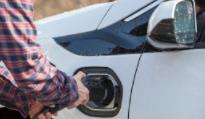As heat wave sweeps through California, grid asks not to charge electric vehicles from 16 to 21 p.m.
Experts acknowledge that shifting to more electric vehicles in the coming years will pose no small challenge, and one of the main issues is how to create a grid that can carry large loads. But they say it's ridiculous to take a few hours of charging limits and say the transition to electric vehicles will fail.
"Nobody's going to charge during that time anyway," said Elaine Borseth, president of the Electric Vehicle Association, an advocacy group, "and it's more expensive to charge during that time ".
Even without a heat wave, this is often the most expensive time to charge an electric car. That's mainly because residents go home between 4 p.m. and 9 p.m., while many businesses are still open, resulting in the greatest demand for electricity; and the grid can no longer use renewable energy sources such as solar.
Borseth said that when she charges her Tesla Model S during off-peak hours, she gets as little as 24 cents per kilowatt-hour. Peak hours, she said, are more than 50 cents per kilowatt-hour, "and that's the biggest factor that affects residential charging." According to Energy Sage, an online marketplace, electric cars generally cost less than 30 percent of the energy used by fuel vehicles per mile (about 1.6 kilometers)
Energy analyst Tyson Siegele (Tyson Siegele) points out that California has some of the highest electricity prices in the nation, and that electric car owners have to be smart. But he says the transition to renewable energy will eventually lower costs. "California is going through growing pains, just like the transition period for any new technology."
Scientists believe the current heat wave that led to California's warning stems from global climate change. Extreme heat is becoming more frequent, hotter and longer-lasting than in past decades. The National Climate Assessment (NCA) noted in 2018 that by the first decade of the century, the frequency of extreme heat had jumped from an average of two times per year in the 1960s to six times per year. According to the report, the annual heat span has been extended by 45 days compared to the 1960s.
The National Weather Service said the next few days will produce a potentially record-breaking sustained heat wave with high nighttime temperatures across the western United States, including California. The weather service said record-breaking temperatures are possible in many places. Temperatures are at record highs in many places from Nevada to Washington state, which California power operators say will make it more difficult to deploy power locally from neighboring state grids.
At a news conference Wednesday, California Governor Newsom said the heat wave "has never been more challenging" and stressed the urgency of accelerating the transition to renewable energy.
"We've been trying to conquer nature," Newsom added. "But it's clear that nature has still conquered us."
OTHER NEWS
-
- Musk says self-driving cars are the future, but 70 percent of Americans don't believe it
- By 19 Sep,2022

-
- Faraday Future FF91 range is out: EPA standard can run 613 km
- By 27 Sep,2022

-
- Australian research team develops new high-speed electric motor that could reduce costs and increase electric vehicle range
- By 16 Sep,2022

-
- Dongfeng Motor: The company's latest power battery system has passed the real vehicle test, the range can exceed 1000km
- By 26 Sep,2022

-
- Tesla auto-assisted driving in another crash: motorcyclist killed on the spot
- By 29 Jul,2022

-
- U.S. cancels Korean electric car subsidies: Korean government worried
- By 22 Aug,2022
